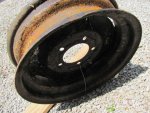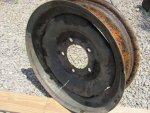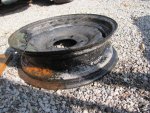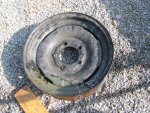I've searched the site and have seen a few post with different members talking about electrolysis and with links to other sites. Well I've decided to post up my small setup with some pictures and show what it can do.
Here is the basic setup using a 5 gallon bucket and rebar for the electrodes. I welded them together to make a good fit in the bucket and allow for room for the part to fit down the middle.



I use a 12volt battery with a normal battery charger hooked to the battery.

Here is the Axle from a M151 I found that I'm gonna soak.


Here is the basic setup using a 5 gallon bucket and rebar for the electrodes. I welded them together to make a good fit in the bucket and allow for room for the part to fit down the middle.



I use a 12volt battery with a normal battery charger hooked to the battery.

Here is the Axle from a M151 I found that I'm gonna soak.


















 Do it in a well ventalated space or outside only. The problem with using stainless steel is the release of the chromium from the stainless steel. Very toxic stuff as in heavy metal poisioning.
Do it in a well ventalated space or outside only. The problem with using stainless steel is the release of the chromium from the stainless steel. Very toxic stuff as in heavy metal poisioning.